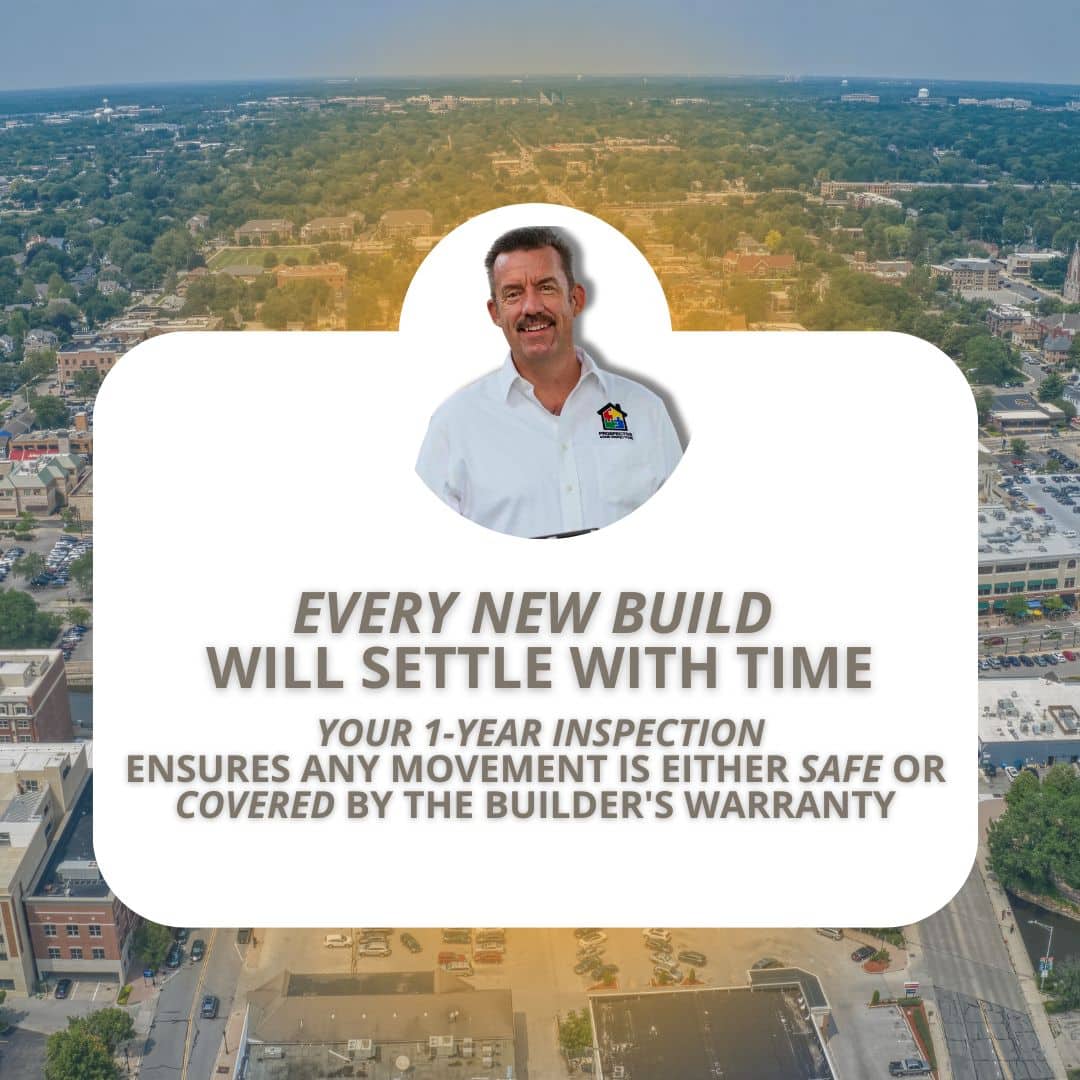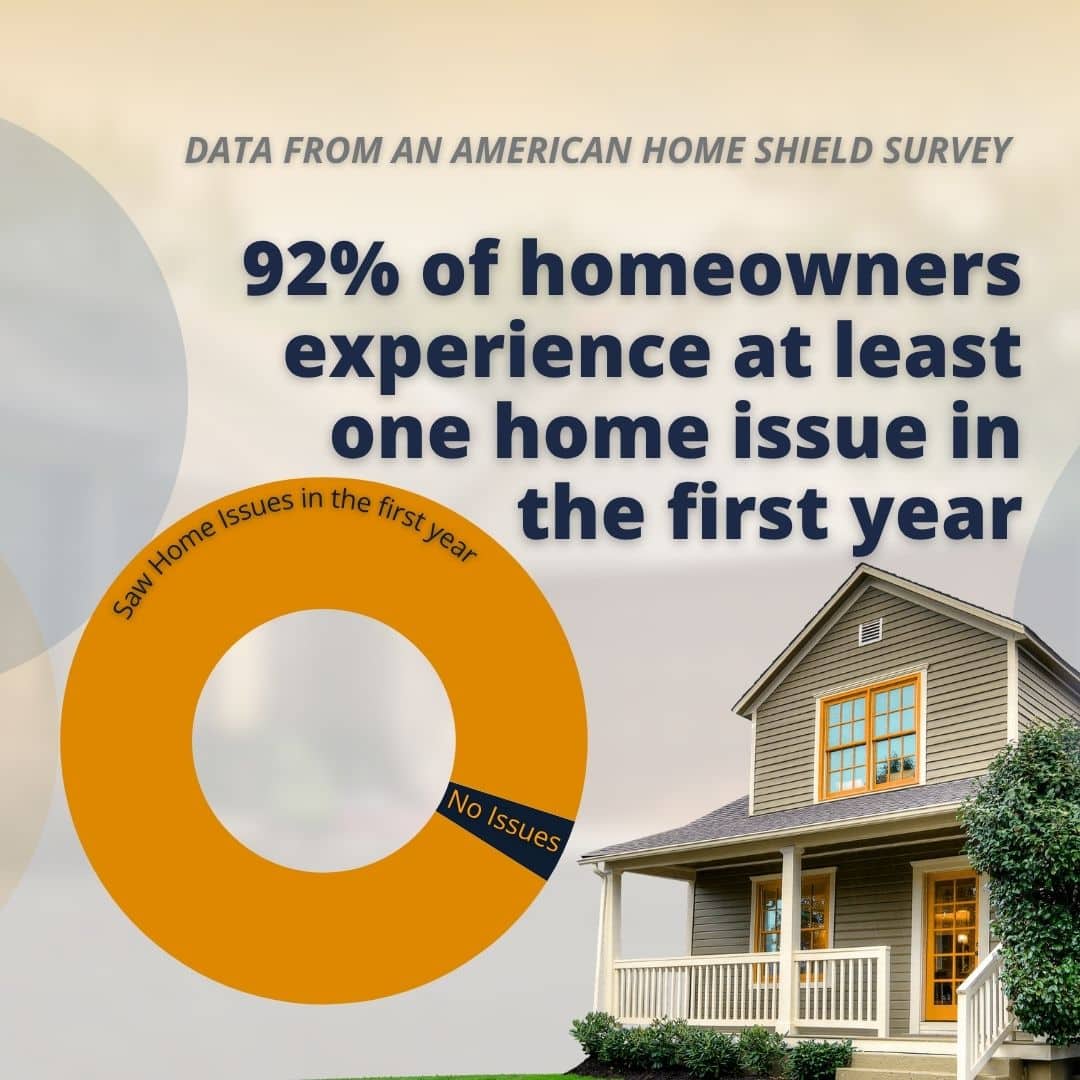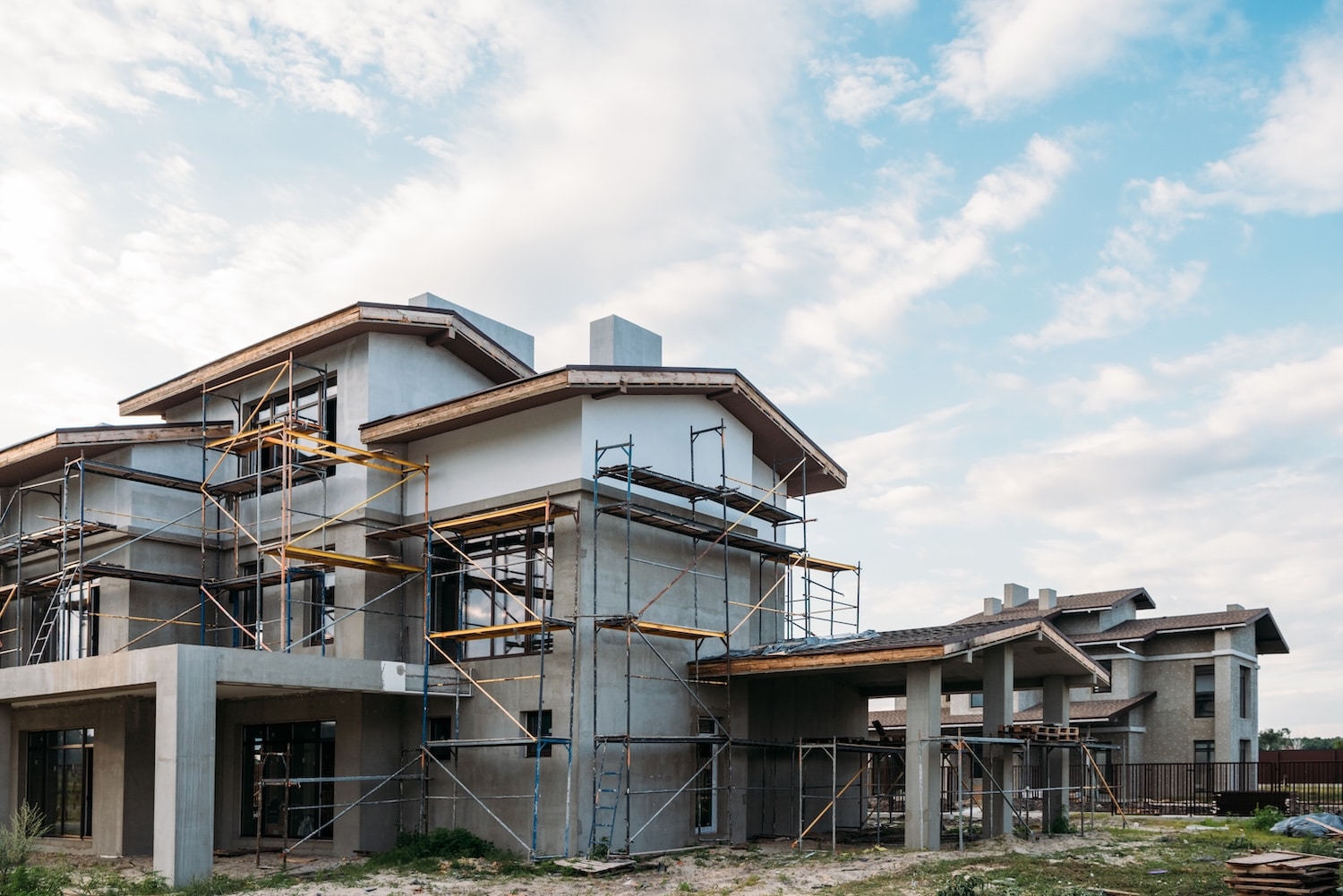This guide explains what 1-year warranty inspection services include, what homeowners gain from them, and why it’s one of the most important steps you can take in your first year of homeownership.
When you buy a newly built home, it often comes with a 1-year builder’s warranty that covers defects in workmanship or materials. But as that warranty period nears its end, many homeowners are unsure what’s actually covered or what could go wrong after it expires.
That’s where 1-year home warranty inspection services come in. This inspection is designed to uncover issues while they’re still covered under your builder’s warranty, saving you money and stress later.
At Prospective Home Inspections, we specialize in helping local homeowners identify problems that builders may have missed, from plumbing leaks to foundation shifts.
What Is a 1-Year Home Warranty Inspection?
A 1-year warranty inspection (sometimes called an 11-month inspection) is a professional assessment of your home’s condition just before the end of your builder’s warranty.
Most new home warranties cover systems and materials for 12 months, structural components for 10 years, and sometimes major mechanicals for longer. However, smaller issues like improper grading, poor insulation, or early foundation cracks often show up during the first year.
A professional inspection helps you document these issues so your builder can fix them under warranty before the coverage expires.
Pro Tip: Schedule your inspection around month 10 or 11 of homeownership to allow enough time for repairs before the deadline.

Why Warranty Inspection Services Matter
New construction doesn’t always mean perfection. Even brand-new homes can have workmanship or installation problems that only become visible after months of use or weather changes.
According to the National Association of Home Builders (NAHB), small issues such as improper flashing, insulation gaps, or settling cracks occur in nearly 60% of new homes within the first year.
A warranty inspection gives you:
- A complete picture of your home’s current condition
- A written record of issues to submit to your builder
- A baseline for future maintenance and resale documentation
This inspection protects your investment and holds the builder accountable for quality and safety.
What Inspectors Check During a 1-Year Warranty Inspection
Your inspector performs a detailed evaluation of the entire property, similar to a standard home inspection but focused on components that have had time to settle or wear slightly.
Here’s what’s typically covered:
1. Structural Components
Inspectors look for cracks in the foundation, uneven floors, or shifting walls that suggest settling or poor soil compaction. Early detection can prevent long-term structural repairs.
2. Roofing and Exterior
Shingle condition, flashing, gutters, and attic ventilation are reviewed to ensure water is draining correctly. Small leaks or ventilation problems often develop during seasonal changes.
3. Plumbing and Water Systems
Inspectors test water pressure, check for leaks under sinks, and inspect visible supply and drain lines. Even new pipes can have connection or sealing issues that cause hidden moisture damage.
4. Electrical Systems
The inspection confirms that outlets, light fixtures, and breakers are working safely. In new builds, inspectors sometimes find missing GFCI outlets or loose wiring.
5. HVAC and Ductwork
Heating and cooling systems are checked for consistent performance and airflow. Inspectors also verify that filters, vents, and ducts are properly sealed and balanced.
6. Interior Finishes
Walls, ceilings, doors, and windows are reviewed for warping, cracks, or misalignment caused by seasonal expansion or contraction. These are often covered under the workmanship portion of a builder’s warranty.
7. Appliances and Fixtures
Built-in appliances, faucets, and toilets are tested for function and installation accuracy. Improper alignment or drainage is a common issue found in new homes.
8. Attic and Insulation
Inspectors look for missing insulation, air leaks, or signs of condensation. Energy inefficiencies discovered early can save homeowners hundreds in heating and cooling costs annually.
The Real Value of a Warranty Inspection
Many homeowners skip their warranty inspection because the home is new and “should be fine.” Unfortunately, small defects often lead to costly repairs if ignored.
Consider this:
- The average foundation crack repair costs $2,100 to $8,400.
- A minor roof leak can cost several thousand dollars to repair after water damage sets in.
- Early HVAC or ductwork issues can reduce system efficiency by up to 20% according to the U.S. Department of Energy.
Addressing these problems under warranty ensures they’re corrected by the builder at no cost to you.
How the Process Typically Works
Step 1: Schedule Your Appointment
Contact Prospective Home Inspections around month 10 of your builder’s warranty. We’ll schedule a time that allows for both inspection and any necessary follow-up with your builder.
Step 2: On-Site Inspection
Our certified inspector examines the property, taking detailed photos and notes. Most inspections take two to three hours, depending on home size and complexity.
Step 3: Receive Your Report
You’ll receive a comprehensive digital report outlining findings, categorized by severity. Each item includes recommendations for repair or follow-up.
Step 4: Share Results with Your Builder
Submit your report promptly to your builder or warranty company. Having a professional, third-party record ensures clear communication and faster action.
Pro Tip: Builders often prioritize warranty claims that are well-documented with photos and inspector notes. Submitting an organized report increases the likelihood of full coverage.
Common Issues Found During 1-Year Inspections
Even when a home appears perfect, a detailed inspection often reveals subtle issues that could cause bigger problems later.
|
Issue |
Why It Matters |
Typical Repair Responsibility |
|
Minor drywall cracks |
Indicate settling or movement |
Builder |
|
Roof flashing gaps |
Lead to leaks and attic moisture |
Builder |
|
HVAC imbalance |
Wastes energy, strains equipment |
Builder or warranty |
|
Poor insulation |
Raises utility bills |
Builder |
|
Sticking doors or windows |
May signal foundation settling |
Builder |
|
Plumbing drips |
Cause hidden water damage |
Builder |
Catching these early gives the builder time to make corrections before warranty coverage ends!

Benefits of Scheduling a Warranty Inspection
1. Peace of Mind and Documentation
A written inspection report provides an unbiased record of your home’s condition, which is useful for future sales, refinancing, or insurance needs.
2. Cost Savings
Most homeowners recover the cost of the inspection several times over by avoiding out-of-pocket repairs once the warranty expires.
3. Stronger Relationship with Builder
Clear documentation and professional inspection findings promote faster warranty repairs and reduce potential disputes.
4. Early Maintenance Planning
Even if no major issues are found, you’ll receive maintenance recommendations that help keep your home in top shape long after the warranty ends.
5. Long-Term Home Value
A properly maintained home with complete inspection records holds higher resale value and gives buyers confidence in its condition.
Zillow data shows homes with well-documented maintenance and inspection histories sell up to 5% faster and closer to list price.
How Warranty Inspections Compare to Standard Inspections
|
Feature |
Standard Home Inspection |
1-Year Warranty Inspection |
|
Timing |
Before purchase |
10 to 12 months after move-in |
|
Focus |
Identifies pre-sale issues |
Detects post-construction problems |
|
Responsibility |
Buyer |
Builder |
|
Coverage |
The entire structure and systems |
Same, but with a warranty focus |
|
Outcome |
Informs purchase decisions |
Documents defects for builder repairs |
The biggest difference is timing and purpose. A standard inspection protects buyers before closing. A warranty inspection protects owners once they’ve moved in and lived in the home long enough for hidden issues to appear.
When to Schedule Your Warranty Inspection
- Months 10 to 11 of ownership to allow time for reporting and builder response
- After major weather events (heavy rain, snow, or freezes), which can reveal construction flaws
- Before warranty expiration, to ensure full builder accountability
Prospective Home Inspections serves Naperville and the surrounding Illinois suburbs with thorough, easy-to-read inspection reports that help homeowners use their warranties effectively.
Our certified inspectors know the region’s common construction practices and identify both visible and hidden defects that other providers may miss.
Other Related Questions Homeowners Ask
Is a Warranty Inspection Required?
No, but it’s strongly recommended. Most builders don’t automatically perform this inspection unless you request one.
Can My Builder Refuse Repairs?
They can only deny claims not covered under the warranty’s scope. Having a professional report gives you leverage if disputes arise.
Should I Attend the Inspection?
Yes, if possible. Walking the property with your inspector gives you a firsthand understanding of findings and recommendations.
When to Call a Professional
If your new home is nearing its first anniversary, now is the time to act. Builders are only required to fix covered issues while the warranty is active.
Prospective Home Inspections offers comprehensive 1-Year Warranty Inspection Services throughout Naperville and nearby Illinois communities. Our team provides unbiased reports that help homeowners take full advantage of their coverage while protecting their investment for years to come.
Pro Tip: Don’t wait until month 12. Schedule early to allow time for review, scheduling, and any follow-up visits your builder may need.
Conclusion
A 1-Year Home Warranty Inspection is one of the smartest investments a new homeowner can make. It ensures that every part of your home, inside and out, is functioning as intended while your warranty coverage still applies.
If your first year of homeownership is nearly up, contact Prospective Home Inspections today. Our certified inspectors will give you a complete, easy-to-understand report so you can approach your warranty deadline with confidence.






